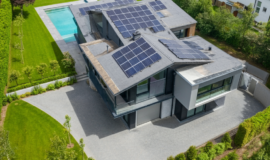Solar Energy for Low Income Households
Several decades ago, solar energy has only been associated with environmentalists – which are committed to promoting a better world with the use of renewable energy – and the wealthy few. Generally, this is because solar energy technology requires high installation cost. Aside from that, there were also unclear policies that hinder the expansion of solar energy use. Thus, solar technologies has been out of reach from many people across the globe. Moreover, prices of solar energy has dramatically dropped over the last five years. Along with other innovative financing approaches, solar has become more accessible to a larger global population.
This progress in renewable energy drives the impetus to go beyond providing solar energy to the rich individuals and promote solar energy to low income families. According to Melissa Giorgi of Markkula Center for Applied Ethics, “If solar is to be a real contributor to a sustainable future, then innovation and investment must focus on improving equality rather than increasing divisions.” Indeed, there is now a critical need to bring solar energy to those low-income communities so the world can create a sustainable future with clean living.
In an average, each household with low income spends approximately 15% to 20% of their income on energy bills. This is an additional stress to the family who also has tight budgets to cover other necessities such as food, housing, clothing, education, medicine and other basic expenses. Lower cost of renewables, including solar energy, will help households to save money on electricity and allocate it to other expenses instead. The use of renewable energy does not only benefit households, but the community as a whole. It provides more local jobs, lower pollution rates, private investments and economic growth.
Approaches to Low-Income Solar
There are different types of strategies to promote solar in low-income communities. They may be in the form of group discount programs, community solar installations or affordable leases. Let’s take a look at how these techniques can benefit low-income households across the globe.
Group Discount Programs
There are two different approaches under this program. First, the house owners can purchase solar systems all together. Then they would select one contractor to install the system in each of their buildings. The second approach is to buy the solar panels in bulk directly from the manufacturer, then the house owners can install the systems by themselves.
Community Solar Installations
One important requirement for this approach to low-income solar is home ownership. It offers the residents of purchasing solar power from a variety of solar panels manufacturers elsewhere. Also, it does not require personal solar installation.
Affordable Leases
Solar energy requires high upfront cost. While other mid-income families can afford to this, many households would still not be able to afford such price. To solve this problem, there are already some solar leasing companies that provide affordable leases to households. Thus, promoting energy efficiency in low-income houses.
These are some of the ways in which solar energy would now be available even to those low-income families and individuals. Indeed, a sustainable future to energy would be achieved when all levels of households will be able to enjoy the benefits of renewables.





